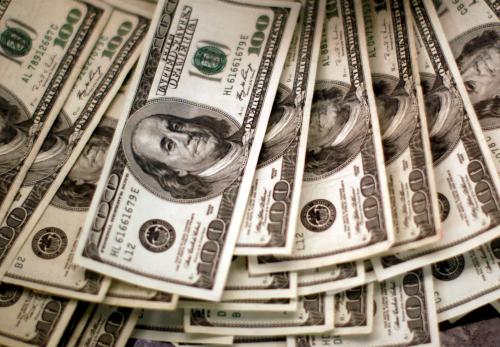For many months, economic pundits and Biden administration officials have expressed their bewilderment at the persistently poor rating the president has received for his management of the economy. After all, they say, job growth has been robust, the country has been at or near full employment during the past year, and as increasing numbers of Americans have entered the workforce, the labor force participation rate has risen above the level that pessimists regarded as its ceiling. Besides, President Biden has successfully negotiated landmark economic legislation to invest in infrastructure and advanced manufacturing. What’s not to like?
A report just released by the U.S. Census Bureau helps answer this question. Simply put, corrected for inflation, the earnings of most U.S. households declined significantly last year. For households in the middle of the economic distribution, the decline was 2.3%, from $76,330 in 2021 to $74,580 in 2022. In all, about seven in 10 households, representing about three-quarters of the electorate, experienced reduced incomes.
The decline was across the board. It included men as well as women, married couples as well as single-headed households, and full-time as well as part-time workers. It did not reflect a decrease in work effort; on the contrary, the number of full-time workers increased twice as fast as did the workforce as a whole. Nor did it reflect a decrease in the pay workers received, which rose by a brisk 4.6% in 2022. Rather, the rate of inflation, 7.8%, outstripped the rate of pay increases so that the income of most households did not buy as much as it had in the previous year. Americans noticed this decrease, and as the polls indicate, they did not like it.
As the census report shows, the 2022 decline is part of a longer trend. After surging to $78,250 in 2019, household income corrected for inflation fell to $76,660, reflecting the impact of the pandemic, and stabilized in 2021 before falling again in 2022. The purchasing power of average households was 4.7% lower at the end of 2022 than it had been three years earlier (see Census Bureau report, Table A-2).
The stabilization that occurred in 2021 was the result of massive government subsidies — the American Rescue Plan enacted by Democrats early in the Biden administration as well as the continuing impact of waves of economic assistance supported across party lines during the final year of the Trump administration. These subsidies, many of which were delivered through the tax code, dwindled in 2022, adding additional downward pressure on household income. As a result, household income after taxes fell by a stunning 8.8% in 2022 — 8.5% for white Americans, 8.6% for Black Americans, and 10.9% for Hispanics (see Census Bureau report, Table B-1).
There is reason to believe that the worst is over for American households. Based on trends over the past 12 months, the rate of inflation for 2023 will be significantly lower than in 2022. Meanwhile, the pace of wage increases has remained relatively robust at 4.3%, outstripping inflation in recent months for the first time since the spring of 2021. In addition, the impact of declining government subsidies will be much smaller in 2023 than in 2022, and workers may begin to feel the impact of economic legislation that until now has seemed abstract and remote.
History suggests that voters are sensitive to changes in their purchasing power. If household incomes corrected for inflation continue to increase during the next 12 months, the public will probably give President Biden higher marks for economic management than he is receiving right now, reducing though not removing a major obstacle to his reelection. If this does not happen, his Republican opponent will have an argument that he will have a hard time rebutting, which could prove decisive if the election remains as close as recent polls indicate.
The Brookings Institution is committed to quality, independence, and impact.
We are supported by a diverse array of funders. In line with our values and policies, each Brookings publication represents the sole views of its author(s).






Commentary
Why so many Americans are unhappy about the economy
September 14, 2023